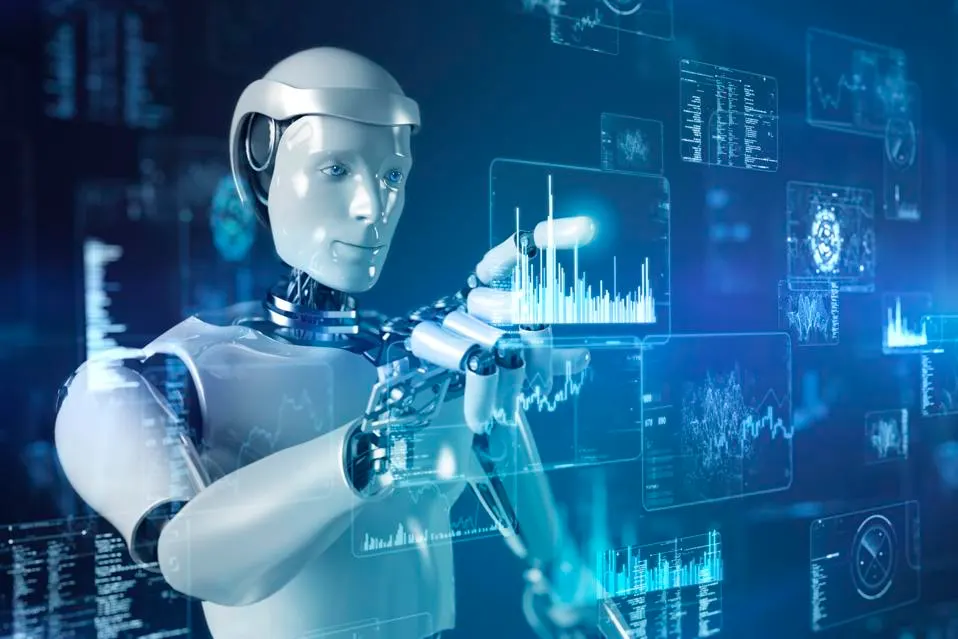
Turns out not even hawkish saber-rattling by the Federal Reserve is enough to awaken stock investors from the spell cast on them by artificial intelligence.
Wednesday was the latest example of a market that is increasingly walled off from economic pressures, with both the S&P 500 and Nasdaq 100 rising for a fifth straight day despite central-bank warnings that interest rates may need to go significantly higher to subdue inflation. Gains were as usual concentrated in the technology megacaps most closely tied to the AI theme, squeezing the S&P 500 higher on a day when almost 60% of its constituents fell.
Nothing has been capable of diverting equity bulls from their infatuation with technology stocks, which are reprising the role of economic havens they played during the 2020 pandemic. Despite bubble warnings blaring from every corner, the Nasdaq 100 Index is headed for a fourth straight monthly advance, a period that included a near-crisis around the US debt ceiling and growing conviction in the bond market that a recession is inevitable.
“It feels macro events don’t matter now because AI is viewed as such a game changer,” said Zhiwei Ren, portfolio manager at Penn Mutual Asset Management. “I would think the Nasdaq 100 would be down a little given the hawkish dot plots. But a few mega-cap stocks in AI were able to support” the index.
Stocks initially buckled Wednesday after the Fed released quarterly forecasts showing its benchmark lending rate rising to 5.6% by year-end, according to the median projection, compared with 5.1% in the previous round. The estimates, accompanying a decision to pause rate hikes, were higher than economists projected and suggested the central bank will resume tightening this year to cool inflation.
But the decline proved temporary as rallies in AI stalwarts Nvidia Corp., Advanced Micro Devices Inc. and Broadcom Inc. pulled the Nasdaq back up and helped it close higher by 0.7%. The gauge is now up 37% year to date — a gain that, should it hold, would exceed all but two full years since 2009.
The S&P 500 fell after the Fed announcement only to rebound and close higher. On the previous six Fed days, the S&P 500 dropped 1% on average in the final hour of trading, according to data compiled by Bespoke Investment Group. This time, the index rose 0.8% after 2:30 p.m., when Powell began addressing reporters.
As has been the case all year, indexes performed roughly in line with their exposure to the mega-cap technology shares. The gain in the Nasdaq 100, which has emerged as almost a pure-play bet on AI, compared with a 0.1% rise in the S&P 500 and a 0.7% drop in the Dow Jones Industrial Average, which was weighed down by a 6.4% fall in its heaviest-weighted member, UnitedHealth Group. The same divergence shows up in year-to-date returns: the Dow is up 2.5% in 2023 while an equal-weight version of the S&P 500 that strips out market-cap biases is up 3.9%.
The Nasdaq hit a new one-year high, while the rate on the 10-year remained well below its October peak even after a creeping higher in recent weeks, creating an “ideal tailwind” for tech stocks, says Victor Cossel, macro strategist at Seaport Research Partners.
“We like technology stocks collectively as the companies were first into the demand pull-forward during the pandemic, first to cut expenses in 2022, and are now likely the first to emerge with operating leverage in the back half of 2023,” he said.
Investors have had plenty of reasons to be gloomy about the economy and markets. Inflation, as Powell reiterated yet again, is still above the Fed’s 2% target, while plenty of economists call for a recession amid the central bank’s uber-tightening campaign. Yet ardor for AI has strategists getting behind the idea that in one way or another, AI could act as a boost to stocks. David Kostin at Goldman Sachs Group Inc. wrote in a note recently that “the potential profit boost from AI has expanded the right tail for equities.”
To be sure, some market watchers saw other reasons for stocks’ resilience, including Chairman Jerome Powell’s seeming refusal to commit to a rate hike in July, as well as an upgrade in the central bank’s economic forecasts. But the strength in stocks was at odds with a deeper inversion in the yield curve from Treasuries — an indicator closely watched for recession signals. The gap between two-year and 10-year yields dipped to the lowest level since the collapse of some regional banks in March.
Computer and software companies ranked as the best performers Wednesday among major industries in the S&P 500, pushing the benchmark to five straight sessions of gains, the longest winning streak since November 2021. Nvidia, a poster child of the AI craze that has almost tripled this year, climbed about 5%.
Powell “hasn’t said enough to douse AI mania,” said Steve Sosnick, chief strategist at Interactive Brokers, pointing to Nvidia’s rally.
Beyond AI hype, there are other things behind the tech revival. These are companies — with their pristine balance sheets and big cash hoards — that can act as havens in the event of any downturn.
“Tech is back as sort of the safe haven, the safe place to go,” BlackRock’s Jeffrey Rosenberg told Bloomberg TV. “It’s back to ‘what is the safe haven for equity investors?’ The safe haven is large-cap tech.”




























